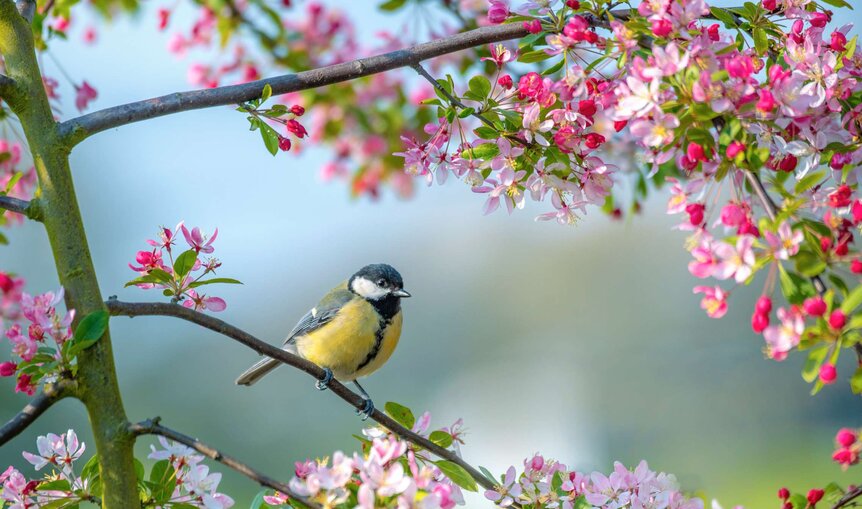Create a free profile to get unlimited access to exclusive videos, sweepstakes, and more!
It's a bird's world after all! New study estimates 50 billion feathered friends live on Earth

While it's often said that birds of a feather flock together, it's fortunate that they don't all congregate aloft at one time as the awesome assembly would most likely blot out the sun.
Retabulating the mind boggling number of avians living on our planet, a new research paper conducted by ornithologists at the Centre for Ecosystem Science and the Ecology & Evolution Research Centre at the University of New South Wales in Australia and published in the Proceedings of the National Academy of Sciences has come to a staggering conclusion.
By enlisting calculations from a number of well-studied species and adding global citizen science data to the mix, the bird-loving team employed estimates of species-specific global abundances for 9,700 bird species, which accounts for 92% of all living bird species, and discovered that there are roughly 50 billion individual birds currently in the world.
And if that brings to mind unsettling images from Alfred Hitchcock's cautionary thriller, The Birds, just think about the fact that this number represents approximately six birds for every human on Earth!
“Humans have spent a great deal of effort counting the members of our own species — all 7.8 billion of us,” said Dr. Will Cornwell, senior author of the study. “This is the first comprehensive effort to count a suite of other species.”
Dr. Cornwell and his crew’s extraordinary bird count was arrived at with the assistance of over 600,000 citizen scientists whose sighting contributions were inserted into the eBird dataset between 2010 and 2019.
The Cornell Lab of Ornithology oversees and runs the eBird.org site that’s available to use for free.
“Large global citizen science databases such as eBird are revolutionizing our ability to study macroecology,” Dr. Cornwell added. “This type of data simply wasn’t available a decade ago.”
By merging these observations with exhaustive avian case studies, the researchers created a sophisticated algorithm to estimate the real global population of each bird species.
The number-crunching took into account detection variables such as how likely it would be that someone would have spied this particular bird and offered the sighting to eBird. Detectability factors range from size and color, to whether or not they fly in flocks and if they’re city-dwellers.
“While this study focuses on birds, our large-scale data integration approach could act as a blueprint for calculating species-specific abundances for other groups of animals,” said first author Dr. Corey Callaghan, who completed the study while attending the University of New South Wales.
Amazingly, the study found only four species with enough members to qualify for the elite "billion club,” which are species with estimated global populations of more than one billion individuals. This feathered foursome include the house sparrow (1.6 billion), the European starling (1.3 billion), the ring-billed gull (1.2 billion), and the barn swallow (1.1 billion).
“It was surprising that only a few species dominate the total number of individual birds in the world,” Dr. Callaghan said. “What is it about those species, evolutionarily, that has made them so hyper-successful?”
However, not all species are found in abundance, and the report declared that nearly 12% of bird species compiled in the study have a world-wide population of less than 5,000. These rarities include the Chinese crested tern, the noisy scrub-bird, and the invisible rail.
“Quantifying the abundance of a species is a crucial first step in conservation,” Dr. Callaghan noted. “By properly counting what’s out there, we learn what species might be vulnerable and can track how these patterns change over time — in other words, we can better understand our baselines.”





























